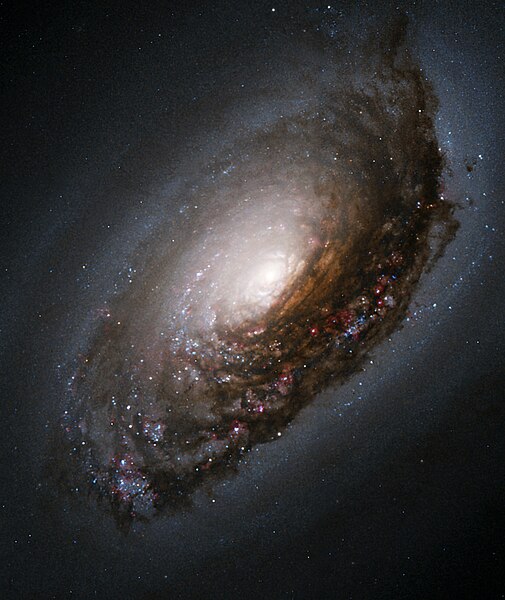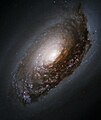File:Blackeyegalaxy.jpg

Dimensioni di questa anteprima: 505 × 600 pixel. Altre risuluzioni: 202 × 240 pixel | 404 × 480 pixel | 897 × 1 065 pixel.
Imagine in alta resoluzione (897 × 1 065 pixel, dimensione del file: 774 KB, tipo MIME: image/jpeg)
Cronolugia di l'imagine
Fare clic su un gruppo data/ora per vedere il file come si presentava nel momento indicato.
| Data/Óra | Previsualizzazione | Dimensione | Cuntributore | Cummentu | |
|---|---|---|---|---|---|
| attuale | 09:46, 2 ghju 2005 |  | 897 × 1 065 (774 KB) | CWitte | This image of M64 was taken with Hubble's Wide Field Planetary Camera 2 (WFPC2). The color image is a composite prepared by the Hubble Heritage Team from pictures taken through four different color filters. These filters isolate blue and near-infrared lig |
Ligami
Le seguenti 2 pagine usano questo file:
Usu glubale di u schedariu
Anche i seguenti wiki usano questo file:
- Usu nantu à af.wikipedia.org
- Usu nantu à ar.wikipedia.org
- Usu nantu à ast.wikipedia.org
- Usu nantu à az.wikipedia.org
- Usu nantu à be.wikipedia.org
- Usu nantu à bg.wikipedia.org
- Usu nantu à bn.wikipedia.org
- Usu nantu à br.wikipedia.org
- Usu nantu à bs.wikipedia.org
- Usu nantu à ca.wikipedia.org
- Usu nantu à ce.wikipedia.org
- Usu nantu à ckb.wikipedia.org
- Usu nantu à cs.wikipedia.org
- Usu nantu à cy.wikipedia.org
- Usu nantu à de.wikipedia.org
- Usu nantu à diq.wikipedia.org
- Usu nantu à el.wikipedia.org
- Usu nantu à en.wikipedia.org
- Messier object
- Coma Berenices
- List of galaxies
- Portal:Astronomy/Picture/May 2005
- Portal:Astronomy/Picture/12 May 2005
- Portal:Astronomy/Picture/Week 48 2005
- User:ComaDivine
- User:Superfo
- User:Gilgamesh~enwiki/Favorite images
- List of spiral galaxies
- Portal:Solar System
- Portal:Solar System/WikiProjects
- User:Passargea/Favourite pictures/Space
- User:Logos/Hall of Galaxies
- User talk:Example/Archives/2008/April
- User:Mike YuHong Chen
- User:Stefania.deluca/sandbox
- Wikipedia:Userboxes/Science/Astronomy
- Wikipedia talk:WikiProject Userboxes/Ideas/Archive 14
Visualizza l'utilizzo globale di questo file.

